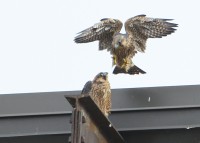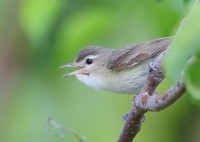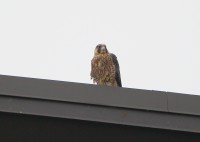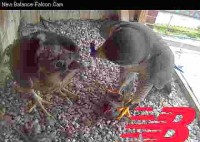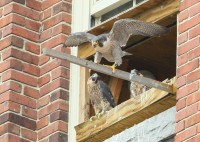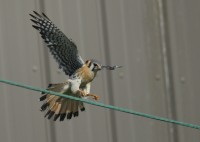More Butterfly flight patterns!
June 6, 2012 in Near the Clock Tower
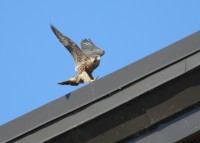 On Wednesday afternoon we finnaly were graced with bright sunshine. What a joy to watch the peregrine chicks again as they hopped, skipped, jumped and even got airborne at the west end of the New Balance west wing roof. Fascinating to watch how the parents guard from a safe but close distance. Kind of like attentive lifeguards at the beach, the adult Peregrines miss nothing!
On Wednesday afternoon we finnaly were graced with bright sunshine. What a joy to watch the peregrine chicks again as they hopped, skipped, jumped and even got airborne at the west end of the New Balance west wing roof. Fascinating to watch how the parents guard from a safe but close distance. Kind of like attentive lifeguards at the beach, the adult Peregrines miss nothing!
8 Photos posted: http://www.pbase.com/birdshots/image/143865500 Click “next” in upper right to advance frames.
According to Cornell’s Birds of North America online entry for Peregrines: Flight progresses from Butterfly-Flight (1–2 d after first flight) to Flutter-Glide (3–9 d) to Powered Flight (15–25 d). Butterfly-Flight appears to be weaker form of Flutter-Glide associated with in-complete development of flight feathers and pectoral muscles. Pursuits gradually become more sustained and range farther from nest. Adult pursuit is accompanied by Begging vocalization. During first 2 wk of flight, young birds’ pursuit of parents takes precedence over most other activities. Young will even pursue parents during territorial defense (Sherrod 1983).
As young become more aggressive toward food-delivering parents, adults sometimes begin to drop both dead and live birds in air. Young pursue and catch these items. Has been interpreted as parental training of young to hunt, but may simply be way for parents to avoid being mobbed by hungry young (Sherrod 1983).
More stories posted online:
Atlantic City casino delays new sign until baby falcons old enough to fly
Pros, volunteers watching for falling falcons downtown
Richmond’s falcons take flight
Peregrine falcons enthrall downtown Duluth birdwatchers
